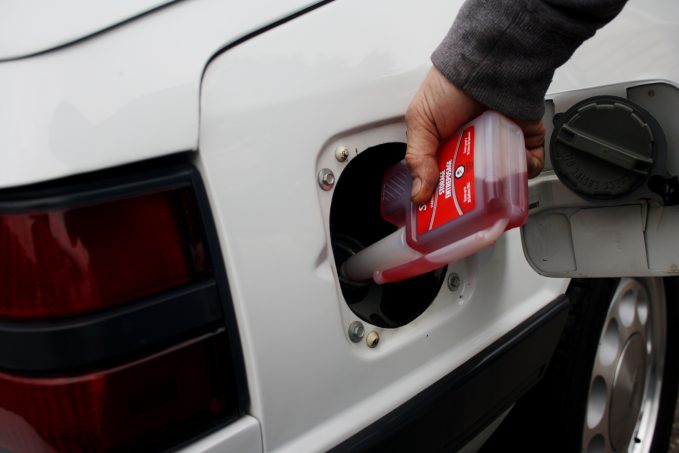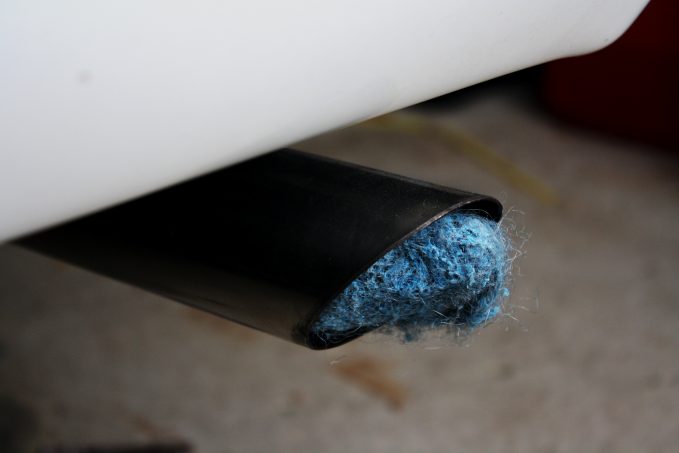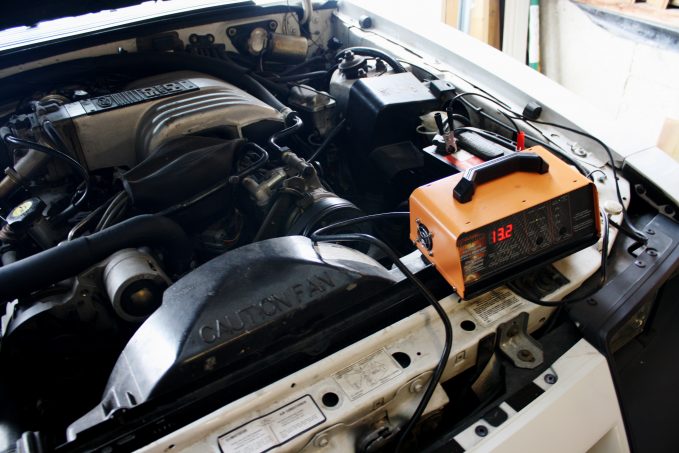It’s December, a dreaded time of year for classic and sports car owners living where the mercury drops and the white stuff falls.
It also means that if you haven’t put your prized possession away for the year, it’s that time again. Attachment issues aside, there’s no better way to protect your ride from the elements than keeping it out of them altogether. With that in mind, here are eight helpful tips to get your car ready for its winter hibernation.
8. Store it Somewhere Dry
While leaving your car outside is certainly an inexpensive storage option, it defeats the purpose of taking your ride off the road for the winter months. That’s where a garage comes in handy — and preferably a climate-controlled one with a concrete floor. If it’s just not realistic to boot your daily driver out of the garage for the next four months, paying for indoor storage is a worthwhile endeavor. A good facility will charge as much as a few hundred dollars a month, which may seem steep, but it’s a small price to pay in the short-term to protect your vehicle from lasting effects of inclement weather.
7. Change The Fluids
Before you put it away, it’s important to change your vehicle’s fluids. Everything from the engine oil and filter to the coolant — and even the gas — should be replaced with clean stuff to reduce the potential for harmful contaminants floating around vital components. Flushing the brake system is recommended, though not required, as brake fluid has a longer life than oil and gas. A full tank of gas should be supplemented by a bottle of fuel stabilizer, but don’t just leave it at that. Take your chariot on a farewell tour to run the stabilizer throughout the entire fuel system.
6. Put it Away Clean
So you’ve driven your beloved ride one last time. The next step is to get it ready for storage with a thorough cleaning. Hand-washing and waxing isn’t just therapeutic; it also provides an extra layer of protection against corrosion and damage to the paint and exposed components. A thorough detail job inside and out won’t hurt either, and will leave your ride road-ready come spring. Once it’s all spick and span, close the windows and put some boxes of baking soda — yes, the same kind that you would put in your refrigerator — in the cabin and cargo area to absorb moisture and musty smells.
ALSO SEE: 6 Tips for Driving in the Snow and Not Crashing
5. Keep The Critters at Bay
It’s been washed and waxed and detailed inside and out, and now it’s time to do what you can to keep unwanted guests out. Insects and small animals like mice love to find cozy places to settle down for the winter, so don’t let it be your classic or sports car’s cabin or engine bay. Make sure all the doors and windows are sealed tightly, and wrap up the exhaust and air intake to keep pests from crawling inside. Steel wool can also be stuffed inside the exhaust and intake if you so choose, but don’t push it in too far or you’ll be fighting to get it out in the spring. Mothballs can also provide an added layer of pest control, but they’re better left outside than in to keep smells to a minimum. Once that’s done, put a quality car cover on it.
4. Prop it up on Jack Stands
This step may seem a little on the extreme side, but it’s an important one — especially if the vehicle is going to sit stationary for weeks on end. Leaving the car on its tires for a prolonged period can lead to flat spots, particularly if it’s fitted with retro bias ply tires or softer radials. Start by placing wheel chocks behind the tires and loosening, but not removing, the lug nuts while the vehicle is firmly on the ground. Next up is to raise the vehicle one end at a time using a floor jack rated for the weight of your vehicle. Once the front or rear of the vehicle is in the air, place at least two jack stands rated for the weight of the vehicle under safe lift points and lower the vehicle to rest on them. Do the same for the other end of the vehicle, and, once the vehicle is resting completely on the jack stands, finish loosening the lug nuts and remove the wheels. Store them in bags on their sidewalls in a climate-controlled area like a garage or basement.
3. Don’t Leave The Parking Brake On
If you don’t want to keep your car on jack stands for the winter months, instead leaving it to rest on the tires, resist the urge to engage the parking brake. Whether equipped with an automatic or manual transmission, place wheel chocks behind the tires and leave the parking brake disengaged. Engaging the brake can lead to fused and ceased brake components or snapped cables, costly and time-consuming fixes come spring when you’ll be itching to hit the road in your ride.
2. Protect the Battery
Whether the vehicle is in the air or resting on its wheels for the winter, do what you can to prolong the life of the battery. Either remove and store it separately — preferably on a shelf in a climate-controlled environment — or hook it up to a battery tender. Batteries aren’t cheap, and the phantom load created by the vehicle sitting for months with the battery hooked up can quickly sap all the life out of one. Worst case scenario, disconnect the cables from the terminals and wrap them in plastic while the vehicle is stored.
1. Don’t Start The Car
This point can’t be stressed enough. Use whatever willpower you have to avoid hopping in and starting the engine — unless, of course, you plan on driving it. Idling the engine for any length of time will do more harm than good, and it’s best to fight the urge and leave the keys in the cabinet. Taking it for a drive, even on an unseasonably warm day, isn’t recommended if for no other reason than the fact that you’ll just have to repeat the storage tips outlined above. Good things come to those who wait, as the old saying goes, and the spring has plenty of good in store for your beloved ride. All you’ve got to do is wait.











